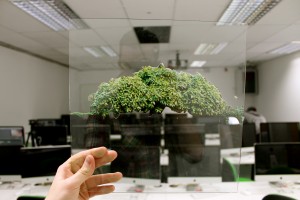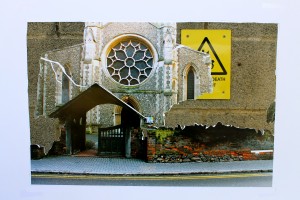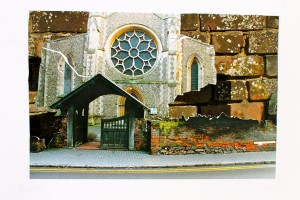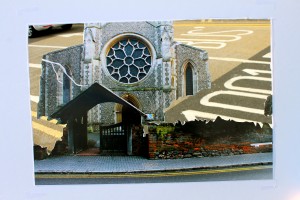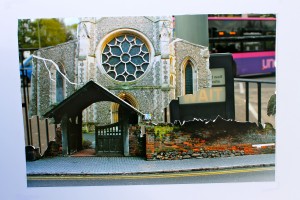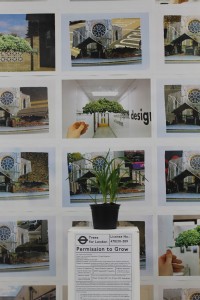Studio Work in England – 2013
“Permission to Grow” was a series that began during my study abroad semester in England at University of Hertfordshire. The idea was born out of a fascination I developed with the complexities of English bureaucracy in the context of its interaction with the natural environment. English government has a reputation for being heavily complex and riddled with red tape. I had noticed a veritable ocean of licensing organizations representing every facet of the diverse english population. The English have a deeply engrained dislike (not fear) of the unknown and disorganized, hence the introduction of incredibly specific organizational systems.
Organizations existed for large demographics – Age UK represented the geriatric population. Help Save the Bees did just that – raised funds to protect English bees. There were even organizations devoted to providing Christmas gifts to stray cats. Most fascinating to me was Transport for London (TfL), the licensing body for all commuter vehicles in the city. TfL represents the underground, city buses, taxis, and trains, among others.
TfL, in all of its bureaucratic glory, became the inspiration for my project. Due to the English necessity to know everything about one’s surroundings, TfL is required to label and explain every aspect of its physical operation meticulously. The most notable difference between Canada and the UK, in transit at least, is in the description of a suicide in the tunnel. Canada: “A medical emergency has occurred. All trains are canceled.” England: “The is a person beneath the train. Train service has been delayed.” This anecdote is not without reason: I found this notion to know and be aware of absolutely everything as an average citizen to be strangely empowering but wildly excessive.
Many times I took the London Underground and would pass storage closets clearly indicated by a “Storage License” with specifics: “Contains: 7 Brooms, 4 Dust Pans, 6 Sponges, 1 Floor Polishing Device, 4 Boxes of Medium Latex Gloves.” It was odd. Why did the English need to know how many sponges existed in any given closet?
Enter: Permission to Grow. Based on TfL’s Storage License form, I developed my own natural organism licensing organization. Trees for London (TfL – not an acronymic coincidence) was my fictions invention, a subsidiary of The Department of Vegetation Management within the further fictitious Office of Tree and Plant Services. The Permission to Grow form was developed to be a facsimile of the Storage License form with all terminology changed for its new context.
For installation I purchased a small, sad looking plant at Wal-Mart’s British cousin ASDA. The plant needed to be a subordinate in personality – appearing to be useless and downtrodden. I placed it on a plinth and affixed its Permission to Grow form beneath, signed by a fictional Vegetation Verification Officer. Behind the plinth I placed a series of photographs of the same cathedral in St. Albans, England, with all natural elements physically cut from the photos. Some photographs featured a clearly superimposed shrub – the shrub removed from the photo of the cathedral attached to a 1’x1′ square glass panel – that I held in front of settings that most definitely did not feature any greenery.
Driven by my distaste for North American suburbia and the encasing of natural space, Permission to Grow became an examination of different societal interpretations of nature in a highly landscaped and occupied urban setting. I chose to use mixed media to interpret my complex theory on the tendency of humans to subordinate nature in what I interpreted as a domestic dispute of the quietest type.

